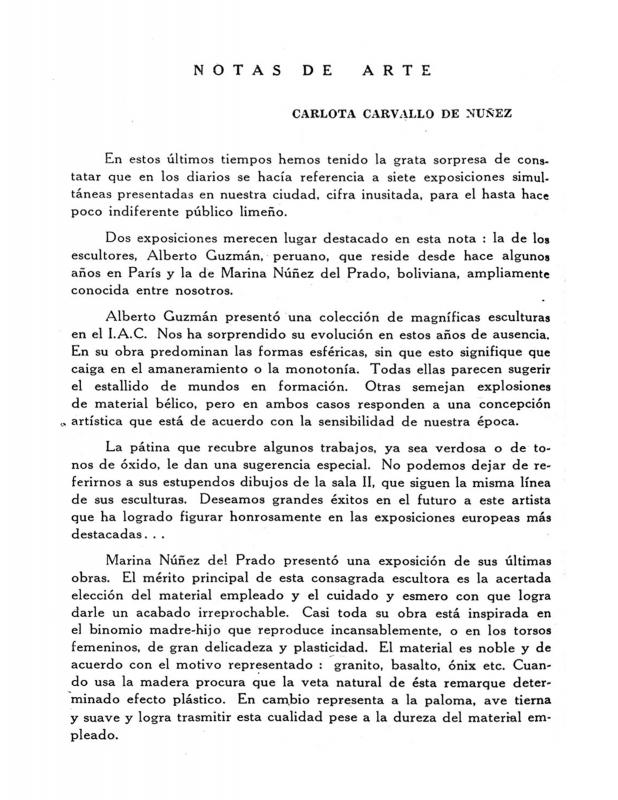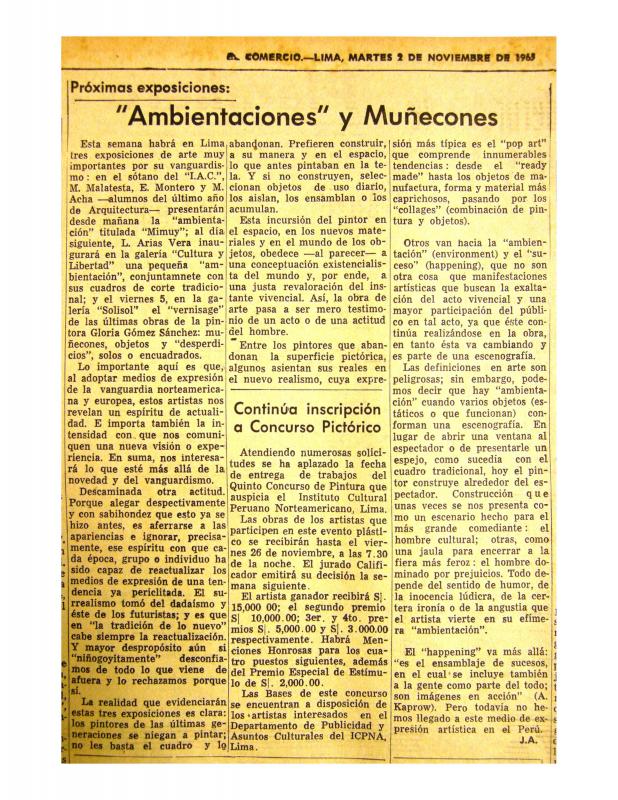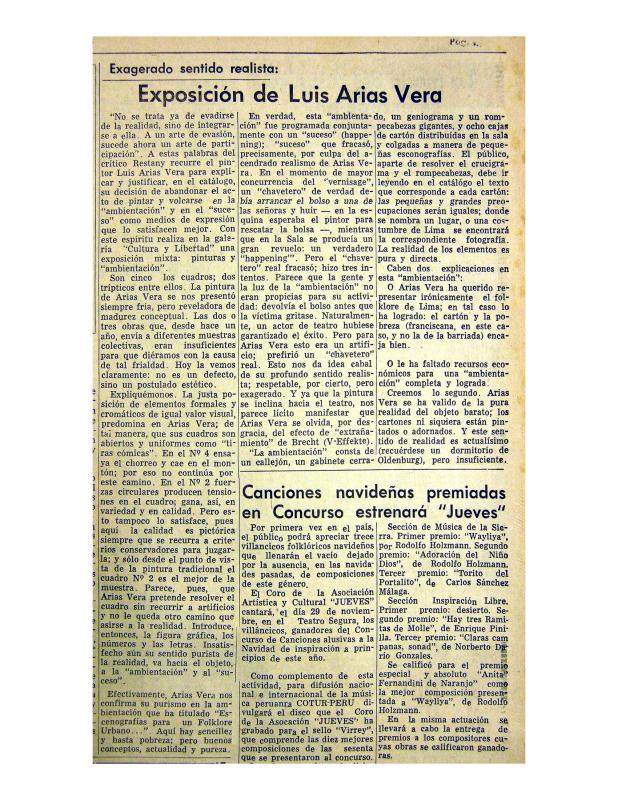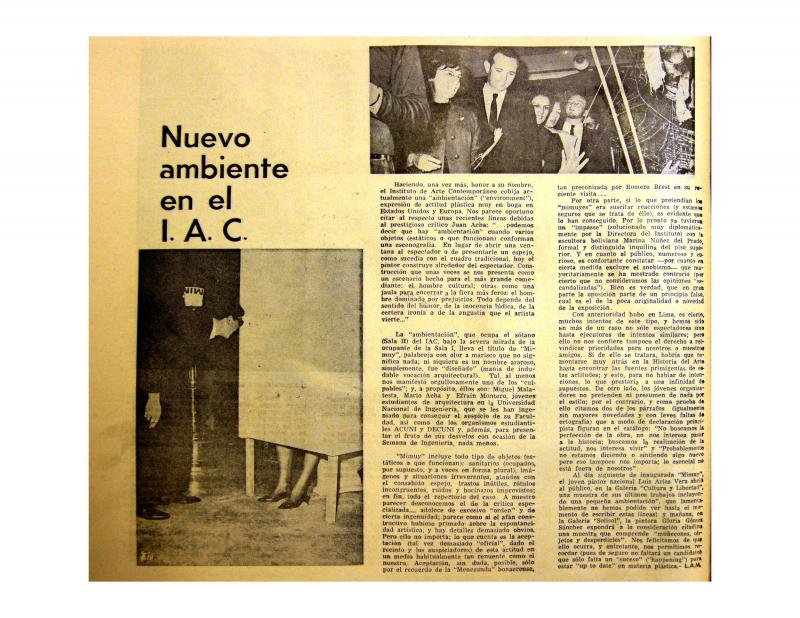Mimuy, the first installation ever presented in Peru, opened in the basement of the IAC (Instituto de Arte Contemporáneo) in Lima on November 3, 1965. It was created by three young students at the Universidad Nacional de Ingeniería: Mario Acha (the son of the critic, Juan Acha), Miguel Malatesta, and Efraín Montero. The project consisted of filling one of the most prestigious gallery spaces in the city with art made of recycled objects. The first problem flared up before it even opened, when the Bolivian sculptress Marina Núñez del Prado (whose work was on display in the adjoining room) accused Mimuy of being pornographic. The three young artists had to make some last-minute changes to their installation before it could open to the public. Mimuy was favorably reviewed by some critics, including Juan Acha and Carlos Rodríguez Saavedra.
The Peruvian critic Juan Acha (1916–95), who lived in Mexico, was one of the main promoters of the Peruvian artistic avant-garde in the mid-1960s. In his articles, essays, and newspaper reviews he was both a theoretical champion for Pop and Op-Art and a supporter for the young artists in those movements that represented the developmental ideology of the period.
Juan Acha was a key figure in the conversation about art in Peru and the rest of Latin America in the second half of the twentieth century. Acha originally trained as a chemical engineer in Munich, Germany and worked in that field when he returned to Lima in 1942. Sixteen years later, in 1958, he published his first articles about art in El Comercio, the influential Lima newspaper, thus launching a long-term critical and theoretical career. In his articles and essay he provided a detailed assessment of the local art scene, identifying the various nationalist trends in the Peruvian visual arts. It had been just a few years since the intense debate about abstraction, in which one of the knottiest problems involved the relationship between art and national identity. In the late 1950s, however, pre-Columbian art began to emerge as a possible solution to the conflict between the option of a Peruvian style of art and the cosmopolitanism of abstraction; Acha actually researched the latter in a number of his essays. Though Acha’s position evolved significantly over the course of his career, he never wavered in his commitment to “artistic avant-garde” movements and his research into the role of “identity in art,” whether Peruvian or Latin American.
[For additional information, see the following articles in the ICAA digital archive: by Carlota Carvallo de Núñez “Notas de arte” (doc. no. 1142429); by Juan Acha “Próximas exposiciones: ‘Ambientaciones’ y Muñecones” (doc. no. 1142445), and “Exagerado sentido realista: Exposición de Luis Arias Vera” (doc. no. 1142510); by Carlos Rodríguez S. “Mimuy” (doc. no. 1142462); and by Luis Antonio Meza “Nuevo ambiente en el I.A.C.” (doc. no. 1142478)].





